
bluerooster
-
Posts
574 -
Joined
-
Last visited
Content Type
Profiles
Forums
Articles
Gallery
Downloads
Events
Posts posted by bluerooster
-
-
My fireplace in the house is double wall flue, stainless liner, with galvanized outer, no worries.
-
I got kinda worried about a month ago when The wind got up just as I was adding more fuel to my open charcoal forge. It's outside, sitting in a pile of dry leaves. :O
Charcoal will give "fireflies" when adding more fuel, sometimes.
-
Well the rain set in. My forge is outside, (shop has wood floor). So, I spent part of the day making a hood from an old 55 gallon drum that we used to keep horse feed in. Got that done, and moved the forge to the barn where the fly pens used to be. Then I moved the stump out there too. I've yet to move the other forge, and build a hood for it as well.
That done, I came back to the shop, and added a hardy hole to the anvil. It came out a bit lopsided, but it will keep a hardy from spinning. Got that done, and set about the task of a horn for the anvil. But I got tired of cutting 2x8 stock, so I gave it a rest for the day/week/month/(?). Tomorrow, if rain is still in the forecast, I'll get a flue installed.
-
As to the flamability of used engine oil; I've found that used aircraft engine oil is quite flamable way more so than automobile oil. I've no clue why. It will ignite easy with a match.
-
In my improvised anvil I would like a hardy hole. What would be the easiest way to do that in a 4x8x12 chunk of steel, with limited tools?
I had thought about welding a piece of square tube to the side, and offset my hardies to sit on the face. Will that work?
-
-
"scuff cookie" is a rollock disc that uses scotchbrite as the abrasive. Scotchbrite pads are referred to as "scuff pads", a cookie is round like a rollock disc, so...
-
Spent the day learning things. I learned that it's darn difficult to see temps in bright sunlight. I learned that by burning my work to a cinder, thinking it was too cold to weld. It just didn't look right temp in the daylight, looked too red. Needless to say, it's ruined. So, I grabbed an old kingpin that I'd replaced in my pickup, and spent the rest of the afternoon playing with different heat in the bright sunlight. Made a square on one end so I could get a good grip with the tongs, and worked the other end to a square, then back round(ish), then back square, then a rectangle. I found that what appears to be good forging temp on a cloudy day, is durn near welding temp in the bright sun. I ended up drawing out a 3/8x6x3/8 square, and decided to save the rest of the round stock for something else. so I cut it off, by heating, and using the edge of the anvil, to score it, and broke it off. Then it dawned on me what that saved chunk of round stock wants to be, a hot cut hardy. But that will wait 'till another day, because this piece of square stock is screaming at me right now. It wants to be something, but I don't know what yet. so I draw it down to 3/8x1/4, and fold it, (here's where I learn something) I get it about 90* and wire brush it, then fold it on over tight, back in the heat, then a bit of flux, then back in the heat. At a dull orange, I pull it out and weld it together. It looked good. In bright sunlight, dull orange, would be bright yellow to dull white in the shade. From that point, I just heat and beat, until it starts to become what it wants to be. Looks like it will become another letter opener. I was hoping for something useful, like a bottle opener, or a hot punch. But hey, steel knows what it wants to be, I just help it along.
-
I assume that you want an 1 1/2" round cup in a piece of 3x3x3/8 square stock, with a flat, square flange. A pretty tall order for sitting cross legged with a hammer in hand. But doable. As mentioned before, positive, and negative die are required, with both die, being flanged as well, if you want to do it all in one go. The edges of the flat steel will want to curl, and wrinkle up as the cup is formed. Which may not be a bad thing, as the amount of stretching will be reduced. Then you'll need to flatten the flange while not deforming the cup. Best thing I can think of just now would be to let the whole mess cool, then clamp the work, and both die together somehow. (a through bolt comes to mind) then chuck the whole mess into the forge, and warm it up to working temp, and flatten the flange on the anvil. Also, bear in mind, the bend radius. The die will need to be chamfered to allow for that as well.
-
That piece would require me to use my body hammers, and turn it into whatever it wants to become. I see a heart shaped pendant with a center stone there. It just wants to come out of hiding.

-
It's got a bucket of water under there. An old stainless milk pail.
-
On 1/27/2020 at 3:00 PM, ThomasPowers said:
As for "It takes way less coal than charcoal to do the same job" Are you measuring by volume or by weight? Coal and charcoal have quite close BTUs per pound; but the density is quite different.
Also if you use a forge designed for coal to burn charcoal it is not as efficient---just like if you use a forge designed for charcoal to burn coal in.
I guess volume. Due to the density of coal, it seems that it takes less. But Charcoal also seems to burn faster, I'm allways having to add more, at a faster rate than with coal.
I have two forges, one for charcoal, and one for coal. Quite different in design. Both seem to work well with the proper fuel.
That "re-breather" idea, I'll check into it. Sounds interesting.
Thanx
-
Thanks for the tips. I had no coke yesterday, so I got the awful startup smoke that seemed to go on forever. Today however, I had yesterdays coke to start with, and like ya'll said, way less smoke. I'll be figuring this out as I go.
The only coal supplier local to me, (farrier supply) has no idea about the coal they have. "It's just forge coal," is what they told me.
-
Spent better part of today learning how to operate a coal fire. And as suggested elsewhere here, I'll be changing the shape of my fire pot. I'll slope the sides more.

While learning how to keep the fire, I made a few things. Another set of tongs, a hoof pick, and a spoon to shovel flux with, also modified my clinker hook. I would have burned up a whole lot more charcoal, doing what I did today with seemingly very little coal. And I have quite a bit of coke left on the table for next time.

Oh, and I really like my new anvil. I think next project will be a hardy hole, and some hardies.
-
And yet another good idea. I have a forge sitting next to the forge in question. I use only one forge at a time, so one can be used as a "hot table" while the other is used to make hot steel. Thus alleviating the need for yet another table.
-
I put the new homemade anvil on a stump, and tried using coal in the homemade forge for the first time.
-
I just put my "new" "anvil" on a stump today. I was thinking that it may be about 4" too tall, (based on the knuckle thing). After using it for about two hours straight, I found it to be just right for my purpose. It comes to about wrist height when I'm standing to move metal. The hammer face hits square when I want it to, so I'm good to go. I'll be working some heavy stock tomorrow, and I'll report back. (I may decide to lower it a bit)
-
-
I like coal, and I hate coal. It takes way less coal than charcoal to do the same job. But Dang! It sure is nasty starting up. Once it cokes it's fine. And when I'm done, I can spread it out on the table and it will go out, ready to go for tomorrow. Charcoal, OTOH will continue to burn to ash, so it's wasted. Coal doesn't throw fireflys like charcoal does, but when you toss some green on the fire it smokes a bunch.
I do have a question though. with the firepot full, mounded, and burning clean, I want to keep green around the edges to slowly coke as I work, But it smokes a lot. Is that just the nature of the beast?
Thanx
Shorty
-
Dang pnut, you mention of a place to put hot steel to cool made me think about a place to put smaller chunks of cold steel, yet to be forged. Most of my smaller (<12") goes into a bucket, which I need to dump and dig through from time to time. Some of which could be on the shelf under the forge, ready to grab, and go. I think I'll add the shelf after all.
-
I was reading somewhere here about the use of a 55 gallon drum for a forge. And the worries expressed about cutting barrels that have contained flammable stuff.
Yes, given the choice, I will cut a food barrel, instead of a fuel barrel. But sometimes we don't have a choice. After years of repairing gas tanks of all kinds, I've learned that it can be safely done with no worries. There are 3 things that are required for combustion, take away any one of those, and combustion cannot/will not happen. those 3 things are; #1 fuel, #2 oxygen, #3 ignition source.
The easiest to remove is ignition source, by not cutting that barrel. 2nd easiest is to remove the oxygen, I purge the tank, or barrel, with exhaust from a running engine. Then I cut, weld, or whatever. There are some fuels with their own oxidizing agent, Nitromethane, and alcohol, come to mind. But, you can still make the mixture of fuel to oxygen too rich to burn by the exhaust purge process.
Now if it's a solid fuel, such as that used in rocket motors, all bets are off. That stuff is designed to burn in a vacuum. But chances of getting a drum that's had any in it are very slim.
It's what works for me, and has since 1985.
-
-
-
Legs are braced. I would never leave it like that, all wobbly and, such. Thought about adding a shelf, but decided that I didn't need another "catch all".

Thanx for the thoughts on the fire pot. I'll modify it.
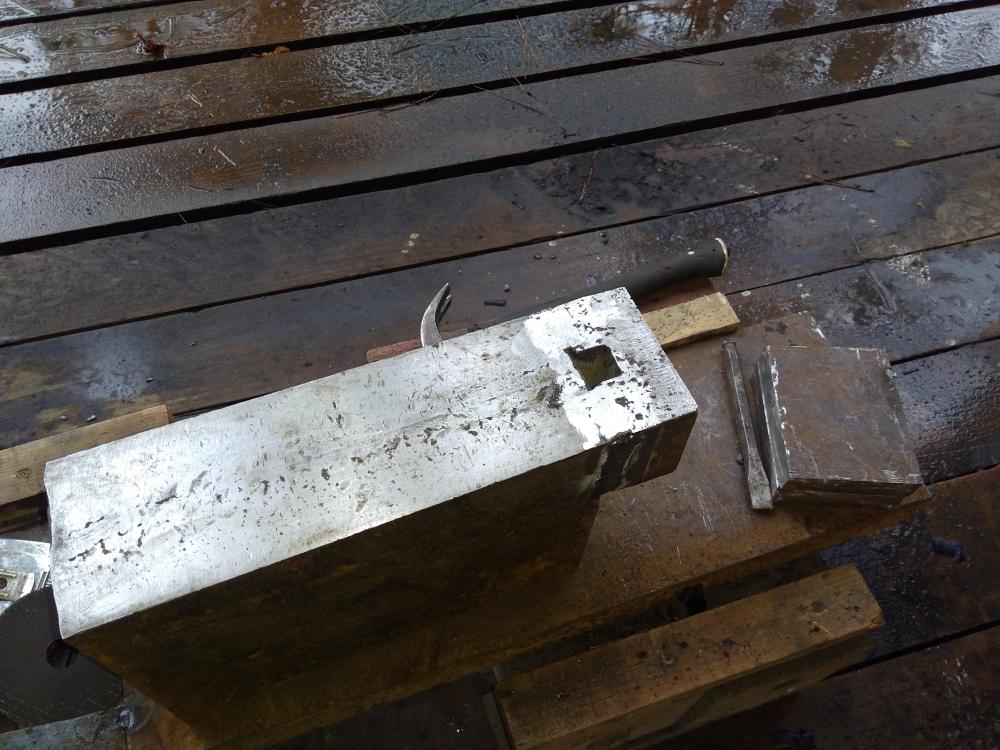
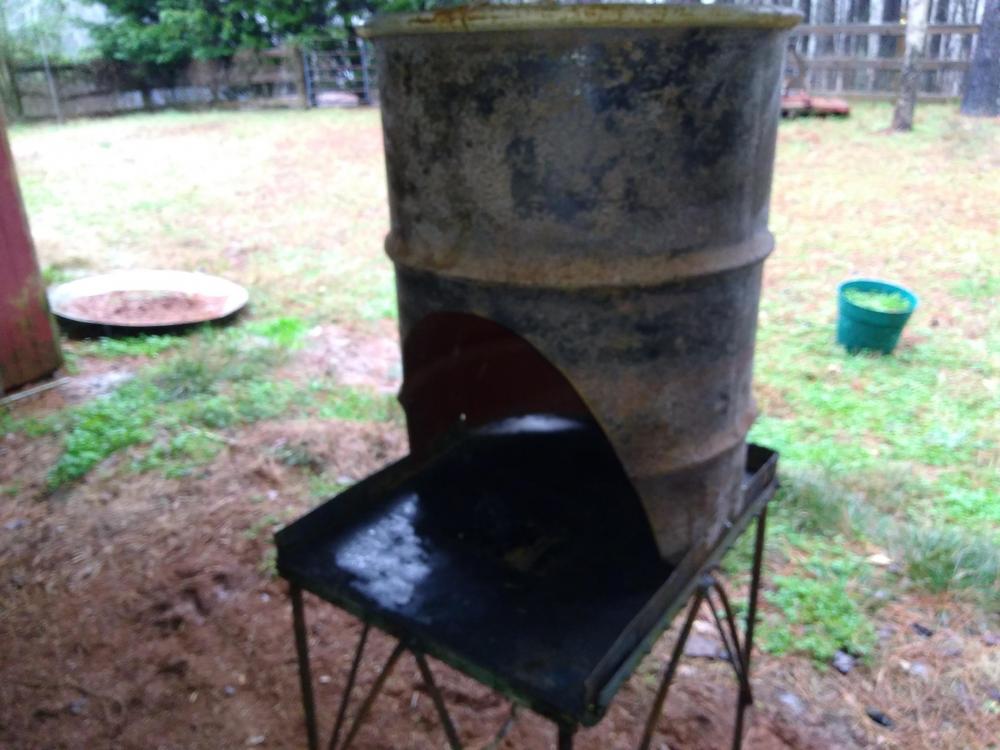
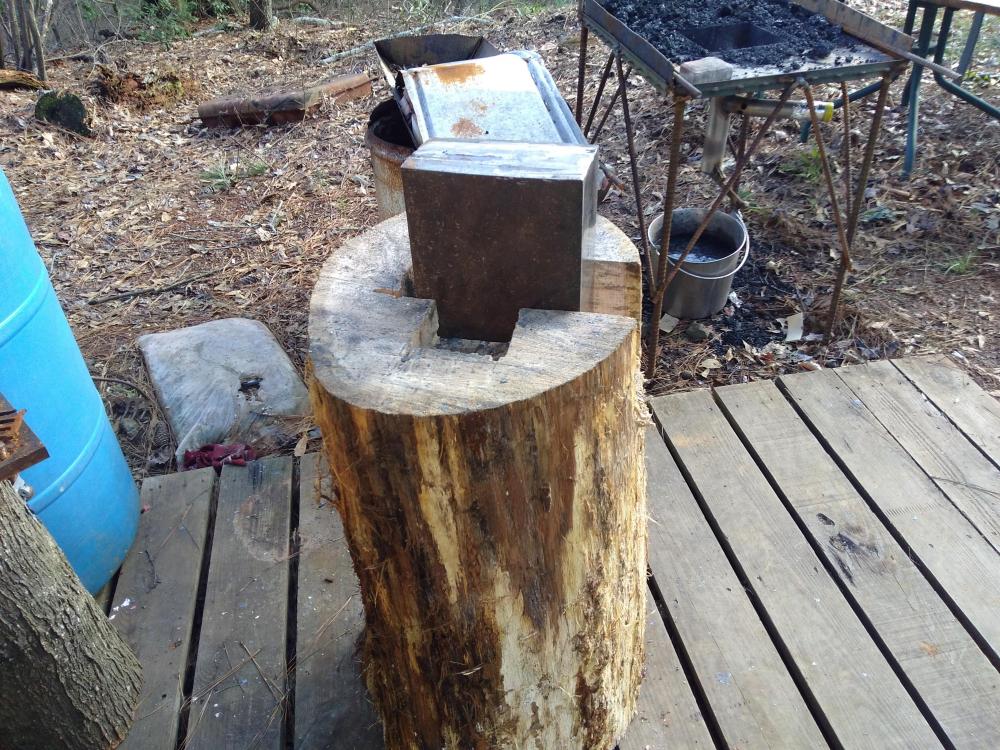
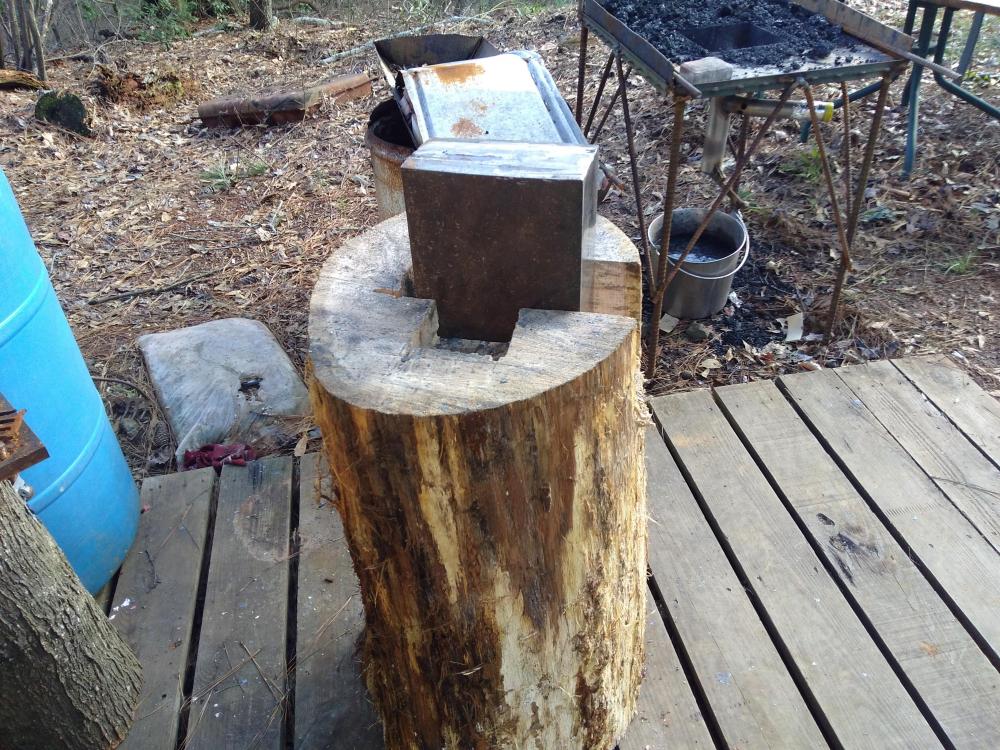
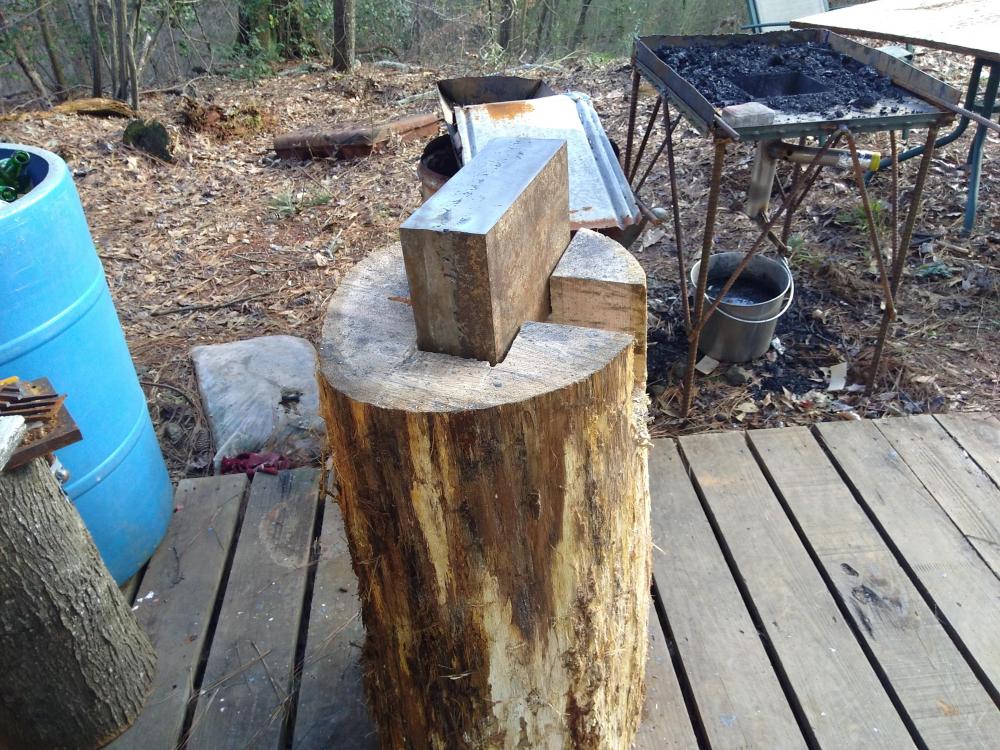
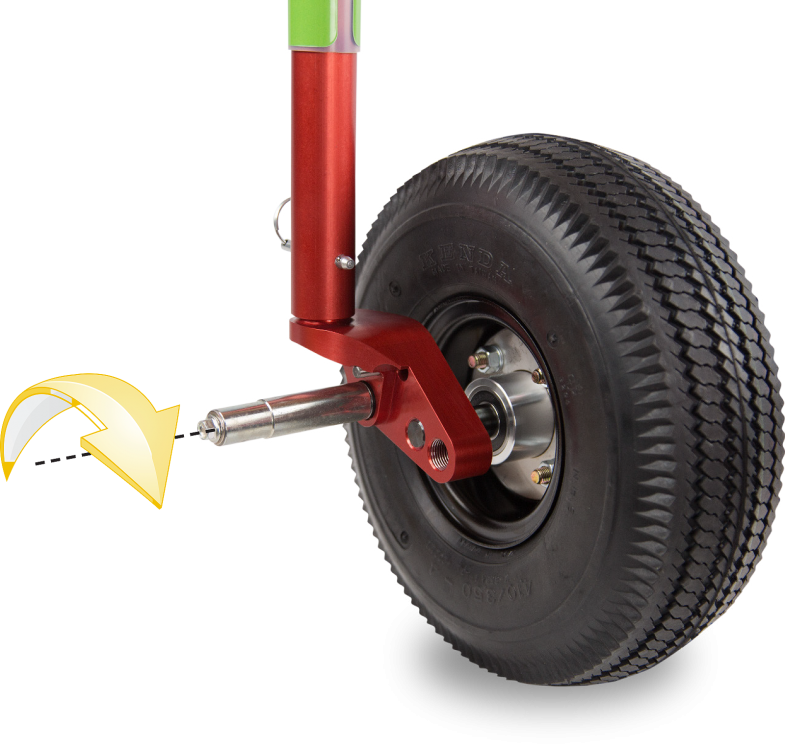
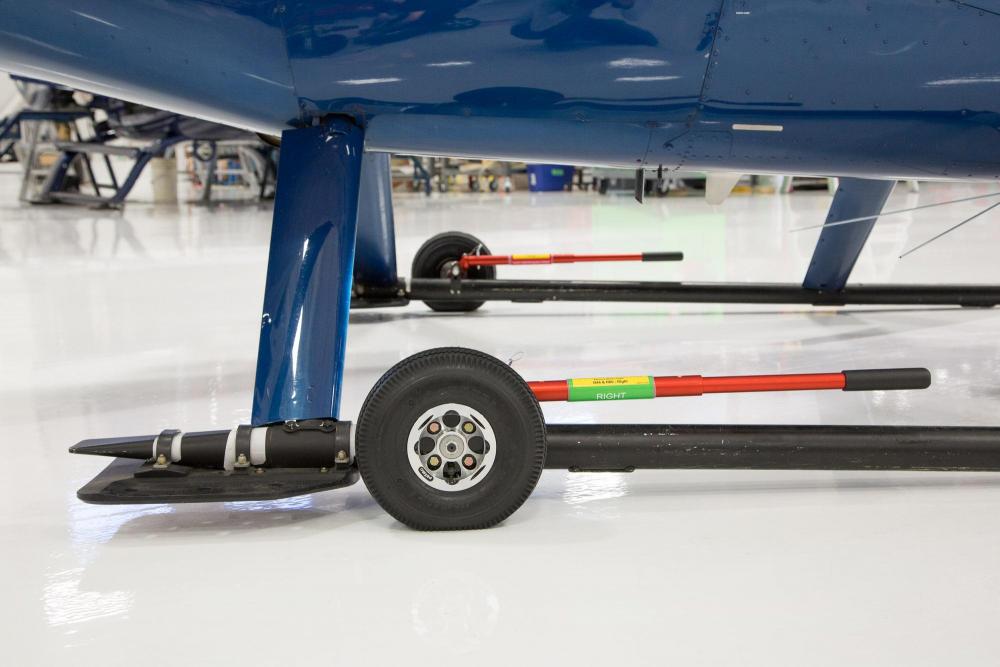
What did you do in the shop today?
in Blacksmithing, General Discussion
Posted
Thanx, it's just a homebrew.